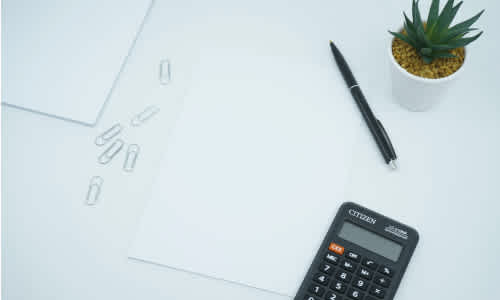Tax time 2021: Everything you need to know

Tax time is once again upon us, which means many Aussies can look forward to a little boost in their bank accounts from July onwards.
But with many of us still working from home due to COVID-19 (and potentially incurring a few more expenses as a result), it could pay to spend a little more time on your tax return.
Here's everything you need to know about tax time this financial year.
What can I claim a tax deduction for?
The general rule is: if you paid for something you needed for work, and your employer did not reimburse you for it, you can claim a tax deduction for it - as long as you have a receipt or bank statement as proof of purchase.
If you purchased something that serves a dual purpose - as in, you can use it both at work and privately - you can generally claim a tax deduction for the work-related portion.
These are things like:
- Your phone bill
- Home office expenses (think ergonomic chairs, keyboards or stationery)
- Professional development or self-education
- Tools and work equipment.
I work from home - what can I claim?
If you work from home, you could potentially claim a few other expenses, like the work-related portion of the following household costs:
- Heating, cooling and lighting bills
- Cleaning costs
- Depreciation of home office furniture and fittings
- Internet expenses
However, this doesn't extend to things like coffee, tea, milk and other household items your employer might have provided for you at work, according to the ATO.
You also can't claim occupancy expenses like your rent, mortgage interest, water or rates as part of your work-from-home costs.
However, if you are self-employed and you conduct your business from your house, you can claim a portion of your rent or mortgage for this.
How do I calculate the work-related portion of my expenses?
When the pandemic set in, the Australian Taxation Office (ATO) introduced a new handy shortcut method to help those working from home calculate the work-related portion of their expenses.
The ATO's shortcut method can be used for the 2021-21 financial year, and allows Aussies to claim 80 cents per hour for each hour they work from home. If you use this method, you can't claim any other work-from-home expenses: it's all encompassing.
If you don't want to use the shortcut method, you can use the fixed rate method, which is 52 cents for each hour you work from home. If you opt for this method, you'll also need to separately calculate your work-related use for your phone, internet, computer and stationery and the decline in value of your equipment.
Make sure you keep accurate records of when you worked from home, like a diary that shows a four-week log of your usual work-from-home pattern, your work-related internet use and the percentage of the year you used depreciating assets exclusively for work.
You can also choose to use the actual cost method, which is where you work out the separate work-related cost of each expense. The ATO has an in-depth guide on how to do this for each expense, but essentially it involves keeping strong records of how much of your household costs you actually incurred in the course of your working hours.
Do I need proof of purchase to claim a tax deduction?
Yes - always keep your receipts!
Good record-keeping is key to ensuring all your work-related claims are approved by the ATO. It's also a great way to keep track of your purchases, and ensure you're not spending more than what you can afford.
However, if you truly have no receipt at all, but you did buy work-related items, you can generally claim a tax deduction of up to $300. You may still be required to explain to the ATO what the item was, how you purchased it and how it's related to your work.
How do I lodge my tax return?
You can either lodge your tax return online through the myGov website, send in a paper form or lodge through a registered tax agent.
If you choose one of the first two methods, your lodgement deadline is October 31. If you use a registered tax agent, you'll need to make contact with them prior to October 31, but your lodgement deadline will be extended to May the following year.
The quickest way to lodge your return - and receive your refund - is to do so via the myTax portal on myGov (www.my.gov.au).
The majority of your employer, bank and health fund information will be pre-filled by late July, so you may want to consider holding fire on your tax return until all the relevant information is there. You'll know everything is there when your 'income statement' is marked 'tax ready' by the ATO.
If you're more comfortable with paper forms, all you need to do is print off the ATO's paper tax return form, fill it out and mail it back to the tax office. You can even order a pack from the ATO, which includes a set of instructions and two copies of the tax return form online or by phoning them on 1300 720 092. You'll need to lodge a few more forms if you have capital gains, rental income, foreign source income or distributions from a partnership or trust.
If you want a professional to lodge your tax return for you, you can seek a registered tax agent. This might be particularly helpful if you have a tricky tax return - for example, if you've worked from home, or if you're a sole trader. However, given tax agents cost money, this may not be the right option if you don't expect to get much back from your tax return.
I withdrew some of my super during COVID. What do I do?
If you withdrew your super as part of the Federal Government's COVID early release of super scheme, you do not need to include these amounts in your tax return, and you won't pay any tax on this money.
However, it's a good idea to keep records and documents to confirm your eligibility for the scheme, as the ATO may ask you for this information.
If you have accessed your super under other compassionate grounds, you will need to include these amounts in your tax return.
What can I do with my tax return?
The way you spend your tax return is completely up to you and depends entirely on your financial goals.
If you're looking at getting approved for a loan soon, it could be a good idea to make sure your finances are looking healthy.
Take your financial pulse by checking your credit score here. If it's not what you expected it to be, you could consider putting your tax return towards some of your debt, or paying any unpaid bills.
To find out more, read our tax return checklist here.
Important: This page provides general information only and does not take into account your individual objectives, financial situation or needs. You should seek independent, professional tax advice before making any decision in relation to the information presented above. The Australian Taxation Office also has resources available at www.ato.gov.au/Individuals.
SocietyOne is not a registered tax (financial) adviser under the Tax Agent Services Act 2009 and you should seek tax advice from a registered tax agent or a registered tax (financial) adviser in relation to any liabilities or obligations or claim entitlements that arise, or could arise, under a taxation law.
Published on 2021-06-01T00:00+11:00
You may also like
News, tips and offers straight to your inbox.


